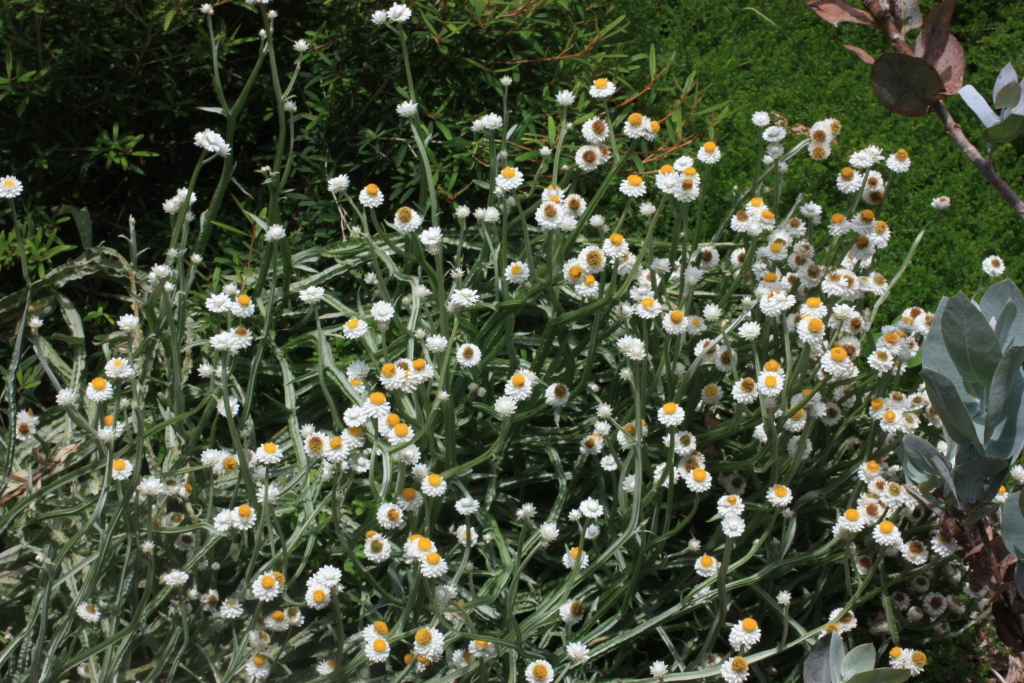Ammobium alatum
R.Br. Winged EverlastingPerennial or facultative annual, erect, white-woolly herb 60–100 cm high; stems usually much branched, prominently winged. Basal leaves petiolate, narrow-lanceolate to spathulate, 10–30 cm long, 5–15 mm wide, acute to acuminate, base attenuate and sometimes more or less hastate; cauline leaves few, bract-like, 2–8 cm long, sessile. Capitula 10–20 mm diam.; involucral bracts 5–10 mm long, white, margins irregular, usually longer than florets; receptacle scales oblong to oblanceolate, herbaceous initially, becoming hardened and rigid, blackish-brown, with an irregular truncate apex and prominent mucro. Florets bright yellow; corolla c. 5 mm long. Cypselas linear, 2.5–4 mm long, rugose, dark brown; cup of pappus c. 0.5 mm long, awns to 1 mm long. Flowers mainly Nov.–Apr.
EGL, EGU. Also SA (introduced), Qld, NSW (native and naturalised), Tas (naturalised). In Victoria confined to East Gippsland where uncommon along sandy or gravelly banks of the Snowy River, and a historic collection from 'Genoa'. It unclear whether 'Genoa' refers to the township in Victoria or to Genoa River (in which case the location could be in NSW or Vic). McDougall (2004) noted that the species appears to be an itinerant, and weedy in much of its natural range. McDougall (2004) has also raised the possibility that the Victorian plants along the Snowy River may have originated from roadside populations upstream at Jindabyne (in New South Wales) where the species is very common, the Jindabyne populations being of an ambiguous origin status.
Jeanes, J.A. (1999). Asteraceae. In: Walsh, N.G.; Entwisle, T.J., Flora of Victoria Vol. 4, Cornaceae to Asteraceae, pp. 652–666. Inkata Press, Melbourne.
 Spinning
SpinningMcDougall, K. (2004). Winged Everlasting Ammobium alatum - threatened species, weed or itinerant?. The Victorian Naturalist 121(6): 284–288.



